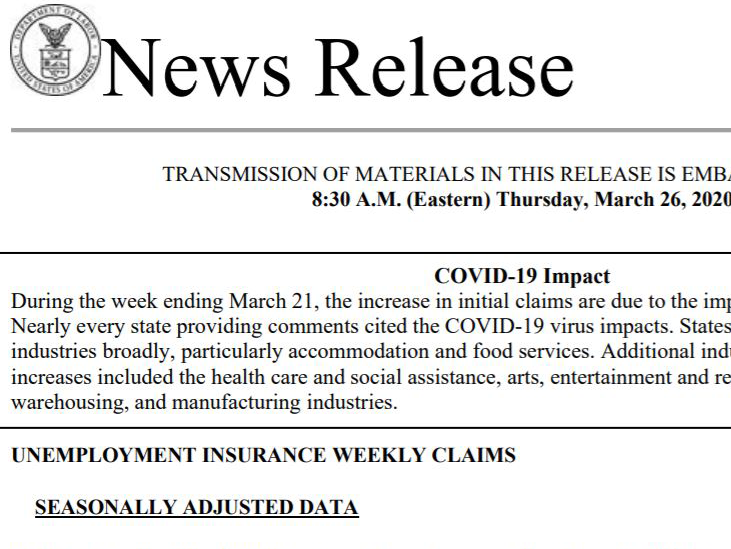Main Content
by Paul D. Gottlieb, March 10, 2020

Opinions expressed in this piece are those of the author alone, and are not meant to reflect the opinions of DAFRE faculty or Rutgers University.
The online media site Slate.com recently ran a headline that read, “You Should be Absolutely Terrified about the Economy.” VoxEU.org took a very different tone: “A Recession is a Public Health Necessity—Let’s Keep it Short.”
I’m with VoxEU on this one.
The virus economy is one of those cases where it helps to forget about the entire machinery of modern economic management – money supply, the business cycle, stock market – and focus instead on the fundamentals of production and consumption. In other words, what is actually going on right now in the world of “stuff?”
Society’s goal at this moment is to continue to produce and consume necessities: food, health care, public safety, and utilities, including the internet. There is also a second set of goods and services—let’s call them “postponables”—that we can do without for a period of six months to a year. This list includes very valuable activities, like elective surgeries, new housing construction, even education. During a pandemic, the rule for postponables is, “if you can do it safely, go ahead. Otherwise stop.”
By design, headline economic measures like GDP and the S&P 500 include spending on both necessities and postponables. Many postponables also qualify as luxuries, using the economist’s definition of that term. It follows that in a pandemic, drops in GDP and the stock market overstate the actual decline in economic well-being. That is because the decline in consumption hits luxuries first: it cuts into flesh, not bone. You would be hard pressed to find a consumer who gives a second thought to those missing restaurant meals, or to the inability to shop for the latest iPhone, under present circumstances. We should actually take comfort in this fact, because it is a direct result of our high standard of living.
This brings us to the matter of necessities and their distribution. In normal times, the producers of necessities generate a surplus over their own needs, which they then exchange with the rest of us for postponables. In theory, the producers of necessities can supply this surplus just as effectively today as they did before. (Admittedly, this assumption requires utility workers and grocery store clerks to put themselves at risk of infection, which they appear to be doing.) So one group of workers will try to produce necessities for the entire population, as they always have, but a potentially larger group of workers will have nothing to exchange for those necessities because their own industries have been shut down.
It follows that the primary macroeconomic challenge posed by the Corona virus is essentially one of distribution, not of output. To its credit, Congress has recognized the need to restore purchasing power to those who have been laid off, and the Federal Reserve Bank is supporting the new public debt with significant monetary easing.
It is hard to give up old habits, though. Reflexively, politicians are using the word “stimulus” in connection with the recently approved spending program. They also included employed people among the programs’ beneficiaries. Both actions suggest that they believe the economy’s postponable sectors will immediately spring to life as soon as consumer confidence is restored.
In a pandemic, however, consumption is unsafe, not under-demanded. Some of the more creative proposals being discussed today recognize this fact: they seek to put businesses in a form of suspended animation, for example, by relaxing the terms of their debt payments. These proposals recognize that a wave of bankruptcies would not only be unnecessarily chaotic, it would also be unjust.
Neil Irwin of the New York Times described the necessary policy response to the virus as a three-legged stool: 1. Support people who lose their jobs, 2. Make sure businesses don’t collapse, and 3. Allow the financial system to support a recovery. With a special nod of appreciation to Fed Chairman Jerome Powell, he concludes that “the U.S. government is acting on a remarkable scale, at rare speed, to try to ensure each leg is in place.”
While Washington acts, the rest of us have a choice to make that will help determine our level of economic anxiety. We can think of the GDP glass as half empty, bemoaning all that lost output and the stock market plunge that accompanied it. Or we can think of it as half full: there’s more than enough productive capacity in the U.S. to keep body and soul together while we wait out the health crisis.
Because the empty portion of the glass cannot be consumed in any case, the correct choice here is “half full.”